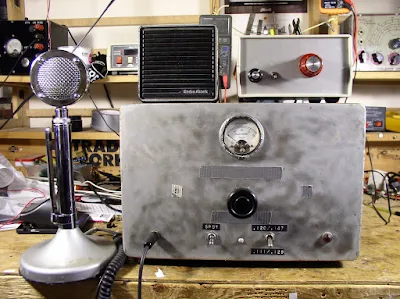 Magnificent, don't you think? The sun is rising over Northern Virginia, and 17 meters is starting to come alive. Yesterday I finished the tweaking and peaking of the JBOT amplifier for the transmitter. It is nice and stable now. (And yes, Steve, it has a low-pass filter!) On top of the transmitter cabinet is the receiver. It is a Barebones Superhet designed by Doug DeMaw and built on a FAR circuit board by Dale Parfitt, W4OP. I changed it to 17 meters and broadened the filter response for use on SSB. Both the transmitter and the receiver use variable crystal oscillators, with two crystals in each (switch-able from the front panels). The frequency coverage of of the transmitter and the receiver match up fairly well (good thing!). Wish me luck! Today I will venture forth amidst the coronal mass ejections and try to make a few SSB contacts on good-ol' 17.
Magnificent, don't you think? The sun is rising over Northern Virginia, and 17 meters is starting to come alive. Yesterday I finished the tweaking and peaking of the JBOT amplifier for the transmitter. It is nice and stable now. (And yes, Steve, it has a low-pass filter!) On top of the transmitter cabinet is the receiver. It is a Barebones Superhet designed by Doug DeMaw and built on a FAR circuit board by Dale Parfitt, W4OP. I changed it to 17 meters and broadened the filter response for use on SSB. Both the transmitter and the receiver use variable crystal oscillators, with two crystals in each (switch-able from the front panels). The frequency coverage of of the transmitter and the receiver match up fairly well (good thing!). Wish me luck! Today I will venture forth amidst the coronal mass ejections and try to make a few SSB contacts on good-ol' 17. Our book: "SolderSmoke -- Global Adventures in Wireless Electronics"http://soldersmoke.com/book.htmOur coffee mugs, T-Shirts, bumper stickers: http://www.cafepress.com/SolderSmokeOur Book Store: http://astore.amazon.com/contracross-20










